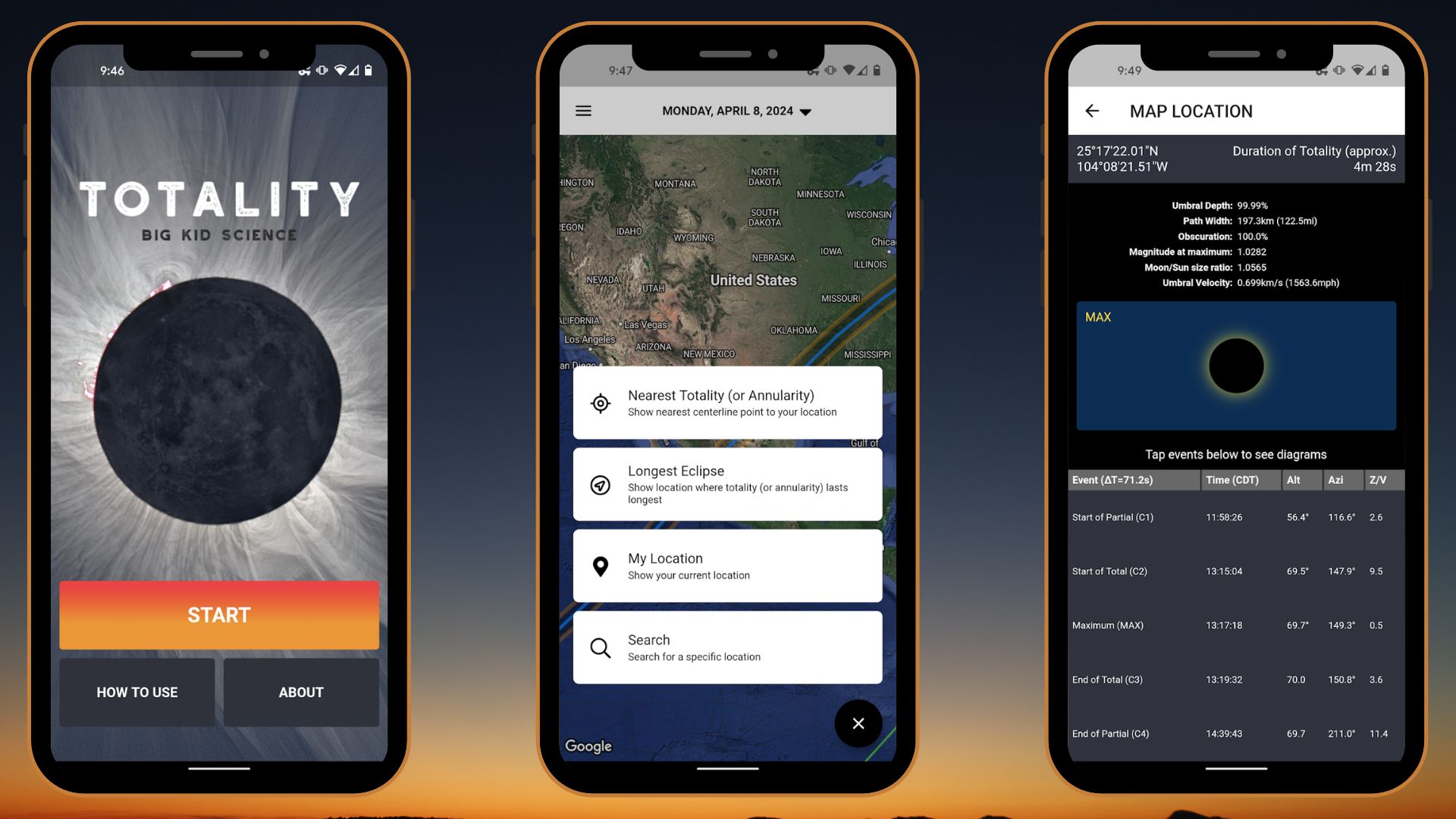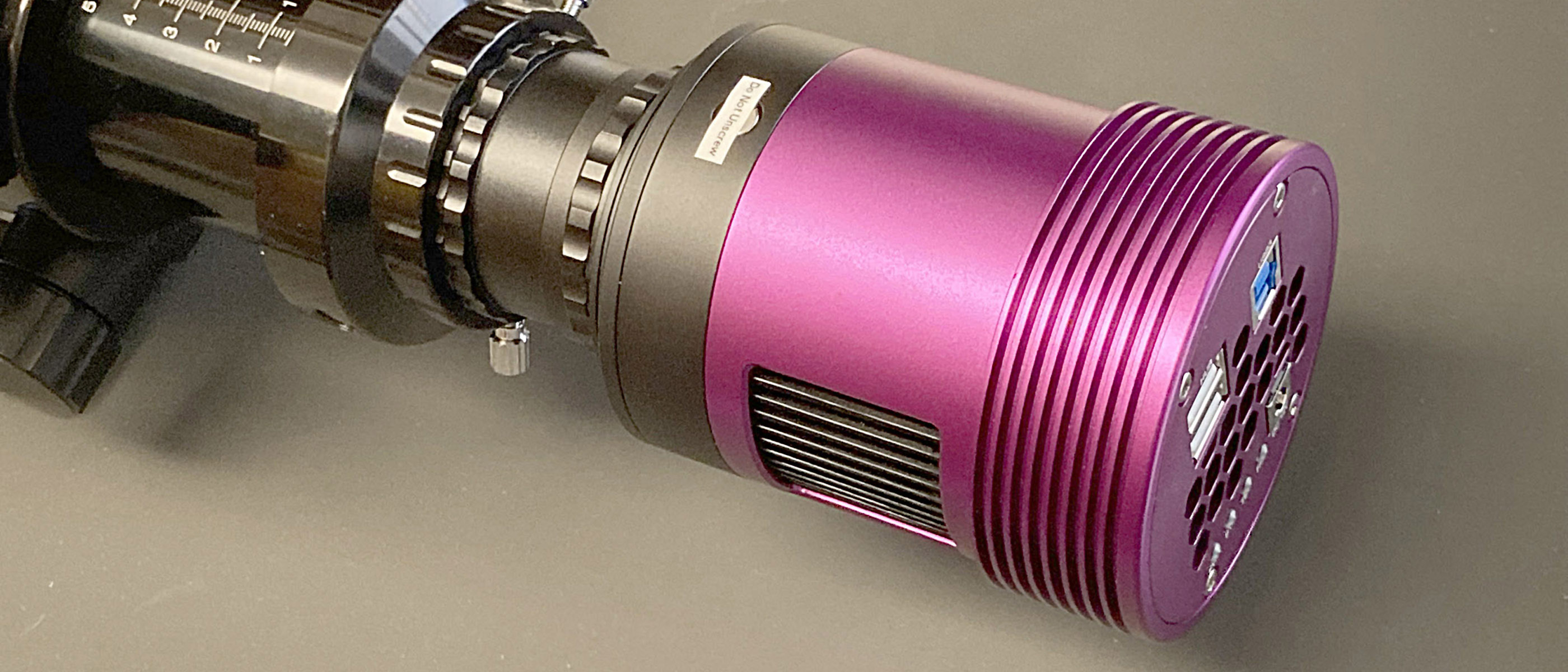Experience April's total solar eclipse from the palm of your hand with the 'Totality' app from Big Kid Science
The app is available for free on iOS and Android devices.
A total solar eclipse will be visible across the U.S. on April 8, 2024, and the free "Totality" app developed by Big Kid Science is the perfect tool to accompany your eclipse viewing experience.
The app's interactive map feature shows you where in the world upcoming solar eclipses will be visible and uses your phone's GPS to tell you what those eclipses would look like from your current location. If you're not in the path of totality for an upcoming total solar eclipse, including the one happening in April, "Totality" will also show you the nearest locations from which you can witness totality. The app also contains a wealth of scientific information about eclipses and can even use Google Maps to provide accurate navigation to the path of totality.
Related: Where will the April 2024 total solar eclipse be visible from?
"I saw a need for an easy-to-use app to help both kids and adults know exactly when and where they could watch an upcoming eclipse and that would provide accurate information about safe viewing and eclipse science," Jeffrey Bennett, "Totality" app creator and founder of Big Kid Science, told Space.com in an email.
Bennett also wanted the app to be free so cost would not be a barrier to anyone. He created the app to help as many people as possible experience totality as well as learn the underlying science behind eclipses. The app was sponsored by the American Astronomical Society.
"I teamed up with Xavier Jubier, who graciously agreed to provide the eclipse prediction code that he wrote for his interactive website, and the two of us worked with the brilliant software engineers at Germinate LLC to turn this vision into reality," Bennett continued.
The "learn" section provides ample solar eclipse resources such as information on how, when and why solar eclipses occur as well as classroom activities meant to inspire the next generation of budding eclipse chasers.
Get the Space.com Newsletter
Breaking space news, the latest updates on rocket launches, skywatching events and more!
Download "Totality" on iOS and Android platforms in English, Spanish, French, and Portuguese.

Jeffrey Bennett is an astrophysicist and lead author of best-selling college textbooks spanning subjects like astronomy, mathematics, statistics and astrobiology. He is the founder of Big Kid Science and creator of the "Totality" app.
Why is the eclipse something to get excited about?
Jeffrey Bennett: In case you are thinking you can just wait for the next one: While total solar eclipses occur somewhere on Earth almost every year or two, after the eclipse of this coming April, the next total solar eclipse to cross a large portion of the United States won't occur until 2045! (A 2033 eclipse will touch northern Alaska, and one in 2044 will touch Montana and North Dakota.)
Is it worth a long drive somewhere to see "totality"?
Bennett: If you can, it's absolutely worth traveling to the path of totality. Imagine the day suddenly turning into night, even while the Sun is high in the sky. For most of human history, such an event — a total solar eclipse — would have surely been frightening. Today, however, we can predict the exact times and locations of total solar eclipses centuries in advance, which means there's no more fear, just an awe-inspiring spectacle of nature. Ask anyone who witnessed totality in 2017 (or any other total solar eclipse) and I guarantee they'll tell you to make sure you get to experience totality this time.
And very important for those who live near the path of totality: Don't round up! You may be tempted to think that a 90% or 99% or even 99.9% partial solar eclipse will give you an 'almost' total experience — but it won't! Even at 99.9%, the sky is still hundreds of times brighter than it is during totality. That means you'll miss the most incredible parts (like seeing the corona and stars/planets) unless you make the short drive to the full path. So plan ahead — especially since the eclipse is on a school day (Monday, April 8) — and be sure you find a way to be ON the path of totality.
This is particularly important because millions of people live in cities that are either crossed by the edge of the path or are just outside it, including San Antonio, Austin, Cincinnati, Detroit, Pittsburgh, Toronto, Montreal and more.
Join our Space Forums to keep talking space on the latest missions, night sky and more! And if you have a news tip, correction or comment, let us know at: community@space.com.

Daisy Dobrijevic joined Space.com in February 2022 having previously worked for our sister publication All About Space magazine as a staff writer. Before joining us, Daisy completed an editorial internship with the BBC Sky at Night Magazine and worked at the National Space Centre in Leicester, U.K., where she enjoyed communicating space science to the public. In 2021, Daisy completed a PhD in plant physiology and also holds a Master's in Environmental Science, she is currently based in Nottingham, U.K. Daisy is passionate about all things space, with a penchant for solar activity and space weather. She has a strong interest in astrotourism and loves nothing more than a good northern lights chase!










